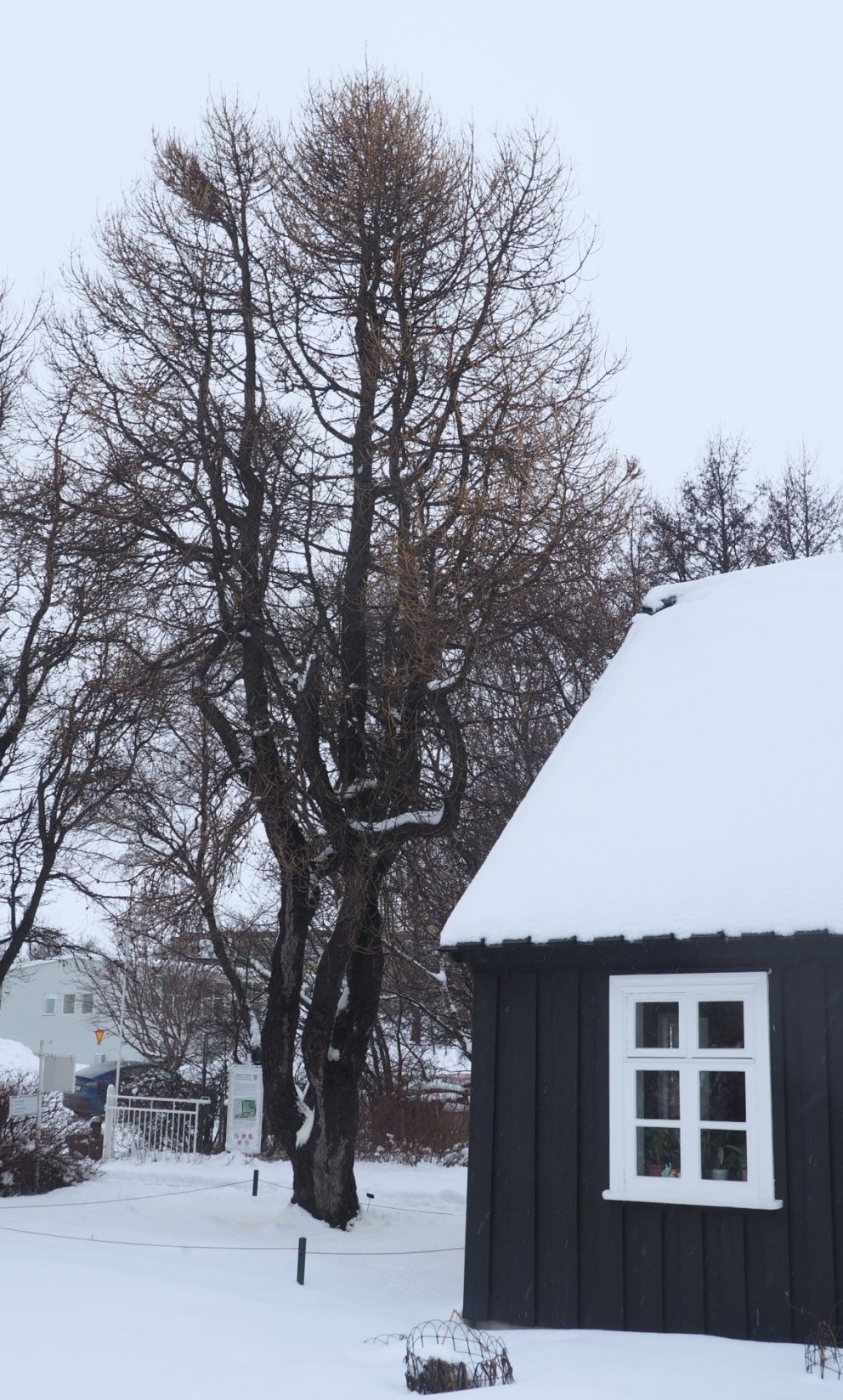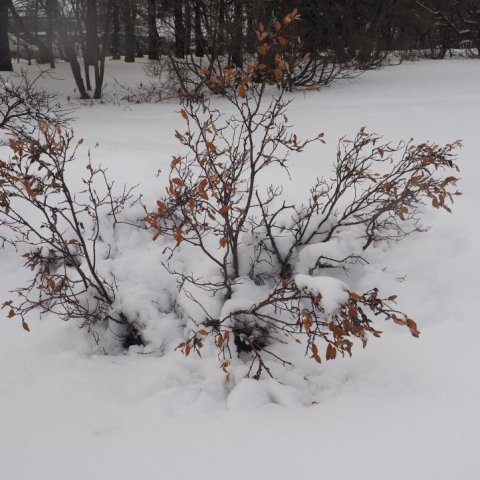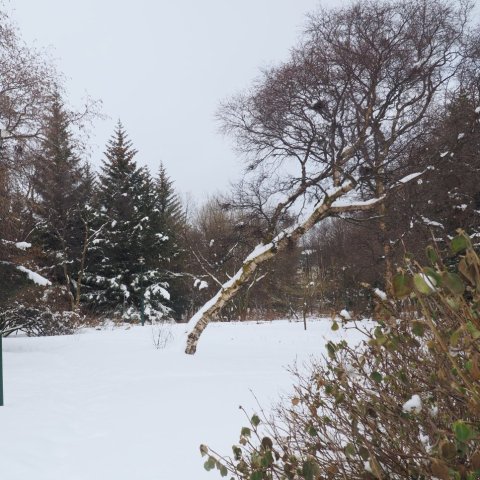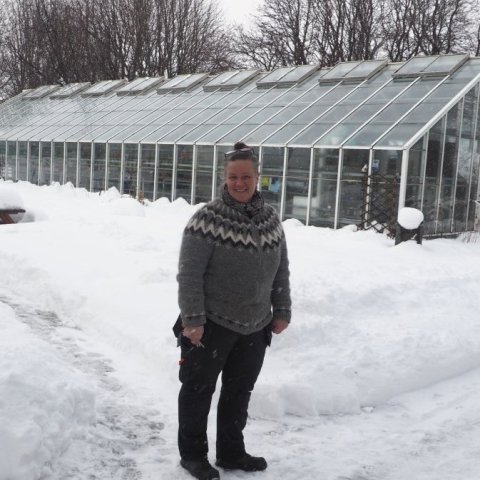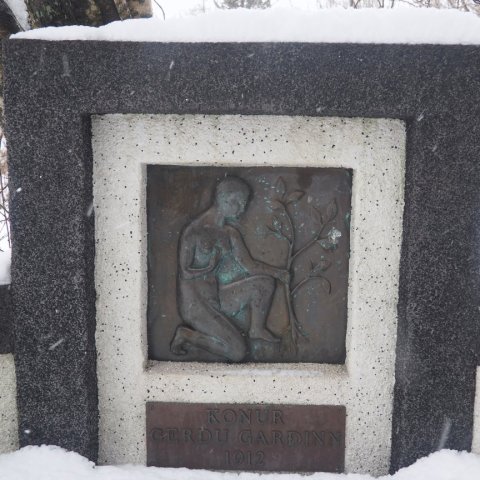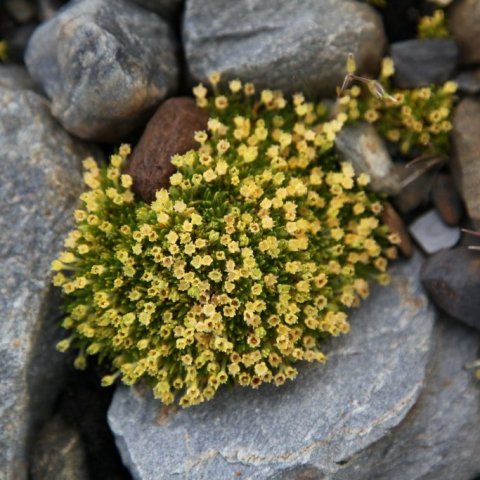Góa begins at the Lystigarður
Góa is the second last month of winter in the old Icelandic calendar and begins this year with konudagur on the 25th of February.
Together with Þorri, these are traditionally the most difficult winter months, with long nights and low temperatures. Plants tend to have a difficult time in the winter, but the cold affects each species in different ways.
Antarctica is the coldest place on earth and has only two plants species, the grass Deschampsia antarctica and the cushion forming pearlwort Colobanthus quitensis.
Many herbaceous plants use the snow as insulating cover but this protection not on offer for trees. Some trees can survive extreme freezing conditions, the genus Salix, Betula, Ulmus, Populus, Larix, Abies, Pinus, Piceae and Tsuga amongst the most tolerant.
Examples of cold tolerant trees at the Lystigarður include siberian larch (Larix sibirica), the stems of which in lab tests were shown to tolerate -70°C while the buds withstand upto -120°C. Lodgepole pine (Pinus contorta) can tolerant temperatures as low as -90°C, while the needles of red pine (Pinus resinosa) will survive at temperatures as low as -150°C.
These levels of cold tolerance are seen only in plants that acclimitised and individuals grown in warmer areas will not withstand these conditions.
